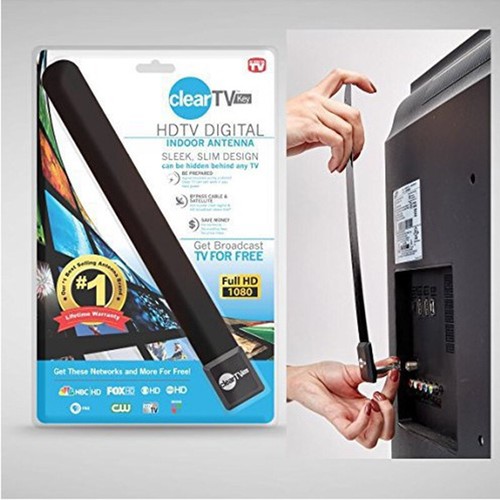No. A plug socket was added at the height of the bracket. Thanks for the reply but is there no gadget that can send the signal from the aerial socket to a receiver in the back of the telly ?
The problem (if you want to call it that) is the Broadcasting and Telegraphy Act. There maybe a more up-to-date version of this, but in a nutshell it's the bit of legislation that prevents you from losing your TV reception if your neighbour did what you're planning.
The Act makes it illegal to rebroadcast the full wideband aerial signal because of how it could interference with the existing transmissions and their reception. That's what you're asking of a device.
Video senders have existed for years. They get around this because they don't send the signal that appears at the end of a coax cable. The signal is decoded first, and only one channel at a time was sent.
With the old analogue senders they picked up a signal from the video outputs of a VCR. It was the VCR that decoded a single channel of the TV transmission, and then sent that signal via a composite (yellow) and mono/stereo audio cable set to the transmitter.
The signals were picked up by a receiver, so these systems came as a pair of devices. The receiver converted the signal back to video and audio to object to an AV input on the TV.
AFAIK, the transmissions between the TX and RX set were at a different frequency to the bands used by the national transmitter network. There were stories though of next door neighbours with the same sort of kits picking up other people's transmissions.
That's the
why and
how behind being unable to just send the whole range of Freeview signals. Let's look next at the modern solutions.
The first thing to say is that the Act is still in place. No solution allows the rebroadcasting of the full spectrum of frequencies.
Modern versions of the old analogue wireless senders exist. They take a signal via HDMI from a set top box (Sky/ Virgin/ Freeview/ Freesat) and transmit on either the 2.4GHz or 5GHz band.
In case you're wondering, no, the signals can't be picked up via Wi-Fi. The frequencies are to do with licensing. 2.4GHz is free to use, and it has good range. However, it's crowded and so prone to interference. That’s not great when you’re trying to watch the soaps or sport and the signal goes off because the microwave is heating up some food.
The makers of better systems pay for licencing to use 5GHz. The range isn't as good, but for in-room use or between adjacent rooms it does fine.
Since you're going to have to control channel changing from a set top box of some description, and that's going to be at the back of the room compared to the TV, then ot would be sensible to spec a wireless kit that includes IR relay. This is where a sensor near the TV picks up the remote signals for the set top box remote and sends them back to the transmitter. An IR flasher on a bit of wire then repeats the commands to control the box.
In order to avoid running a coax cable you'll need to by a Freeview receiver, and a HDMI wireless sender kit, and make sure that the kit is 5GHz, and with IR relay.
The extender shouldn't be an issue, but the set top box is a different matter.
There used to be cheap Friewview HD boxes from Manhattan, Bush and Alba. These were pukka Freeview licenced designs, so you got the same TV guide structure as a TV. Something has happened in the market and these have all vanished. Argos and Currys no longer have this stuff. In fact, one of them has no Freeview boxes at all! The other lists the Humax Auna (sp?) boxes which are priced between £230 and £270.
Amazon has cheap boxes, but they're mostly just digital TV receivers rather than Freeview boxes. This means the TV guide doesn't follow the familiar BBC1, BBC2, ITV1, Ch4 listing structure.
This all makes the option of running a cable more attractive. However, subject to whether the flat is owned or rented then a wireless solution might still be preferred.
If you want to keep the cost down then a used Freeview recorder might be the answer. I took in some Humax HDR1800 and HDR2000 boxes as part exchanges from customers. They're easy to use, good quality and reliable. LMK if you're interested.




